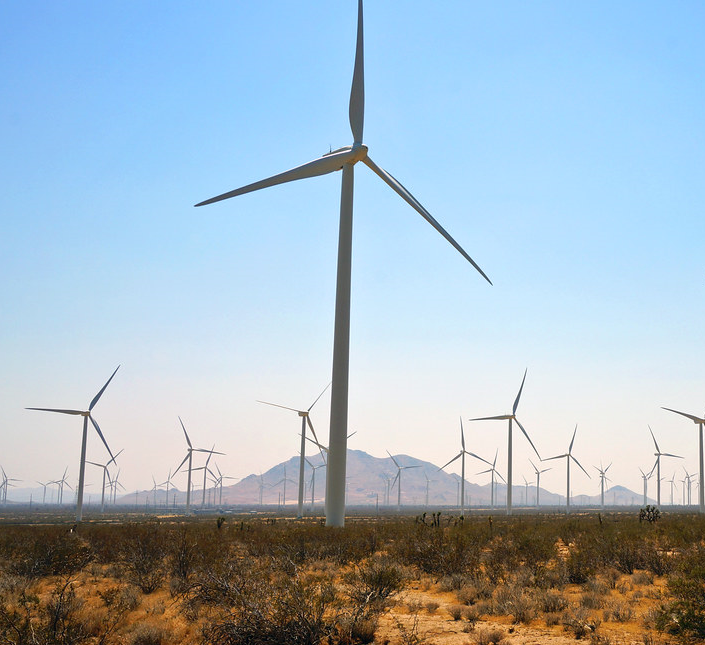The West Coast of the USA, which includes states like California, Oregon, and Washington, is a significant hub for wind energy production due to its coastline, mountainous terrain, and abundant wind resources.
Current Wind Energy Production
Total Wind Capacity (for all three states combined):Approximately 15-16 GW (gigawatts) of installed wind capacity as of 2023.
California, installed wind capacity
About 6,000 MW (~6 GW).Percentage of State’s Electricity: Wind energy accounts for roughly 7-10% of California’s electricity needs.
Major Wind Farms in California
- Altamont Pass Wind Farm: One of the oldest wind farms in the country, located east of the San Francisco Bay Area.
- Shiloh Wind Power Plant (Solano County). Located between Sacramento and the San Francisco Bay Area.
- Tehachapi Pass Wind Farm: One of the largest wind resources areas in California, situated in Kern County.
- San Gorgonio Pass Wind Farm: Located near Palm Springs, this wind farm benefits from strong desert winds.
Oregon installed wind capacity:
Around 4,500 MW (~4.5 GW).Percentage of State’s Electricity: Wind energy supplies around 11-15% of Oregon’s electricity needs.
Major Wind Farms in Oregon
- Shepherds Flat Wind Farm: Spanning over 30 square miles, it’s one of the world’s largest wind farms, producing more than 845 MW.
- Biglow Canyon: Located near the Columbia River Gorge, a major site for wind energy.
Washington installed wind capacity
Approximately 3,200 MW (~3.2 GW).Percentage of State’s Electricity: Wind energy contributes to around 7-9% of Washington’s electricity.
Major wind farms in Washington
- Wild Horse Wind Farm (Kittitas County)
- Nine Canyon Wind Project (Benton County)
- Stateline Wind Farm (Straddles Oregon-Washington border)
Wind energy coverage for West Coast
This numbers presents % of total electricity Needs by sttate coverd by wind energy plants.
- California: 7-10%
- Oregon: 11-15%
- Washington: 7-9%
These percentages reflect the significant role that wind energy plays, although hydropower (especially in Washington and Oregon) and solar (especially in California) still play dominant roles in the energy mix.
Plans for Future Wind Energy
Offshore Wind Development
The West Coast, especially California, is looking to harness the power of offshore wind, which has enormous potential. Unlike the East Coast, where offshore wind projects are advancing rapidly, the West Coast is still in the early stages.
California Offshore Wind Goals
California aims to install up to 25 GW of offshore wind energy by 2045. This would be a game-changer in terms of meeting clean energy goals, especially with its vast coastline and the emerging technology of floating wind turbines.Morro Bay Wind Energy Area and Humboldt Wind Energy Area have been identified for development, with plans to start leasing as early as 2025.
Onshore wind expansion in California
California is continuing to expand its onshore capacity with a focus on improving transmission infrastructure to better integrate wind from high-wind areas (like the Tehachapi region) into the grid.
California aiming for 100% clean energy by 2045, with a large chunk of that projected to come from wind (onshore and offshore), solar, and storage.
Wind power expansions plan For Washington and Oregon.
Oregon and Washington are focusing on adding more wind farms in eastern regions, where wind resources are stronger and land availability is higher. There are also ongoing efforts to pair wind power with energy storage projects to ensure greater reliability. Integration with Storage & Grid to increase the utilization of wind energy, there are ongoing plans to integrate wind power with battery storage and hydrogen production, which can store excess wind energy for later use.Transmission upgrades are being planned to ensure that electricity generated from wind farms in remote areas can reach urban centers effectively.
Oregon and Washington: Both have set targets for 100% carbon-free electricity by 2040, and wind is a key part of achieving these goals, alongside solar and hydropower
Challenges for West Coast energy transformation.
Balancing grid integration, improving energy storage, and ensuring that new infrastructure can handle the increased generation from wind resources.Wind energy on the West Coast is poised to grow significantly in the coming decades as part of the region’s broader goals for renewable energy and carbon reduction.
